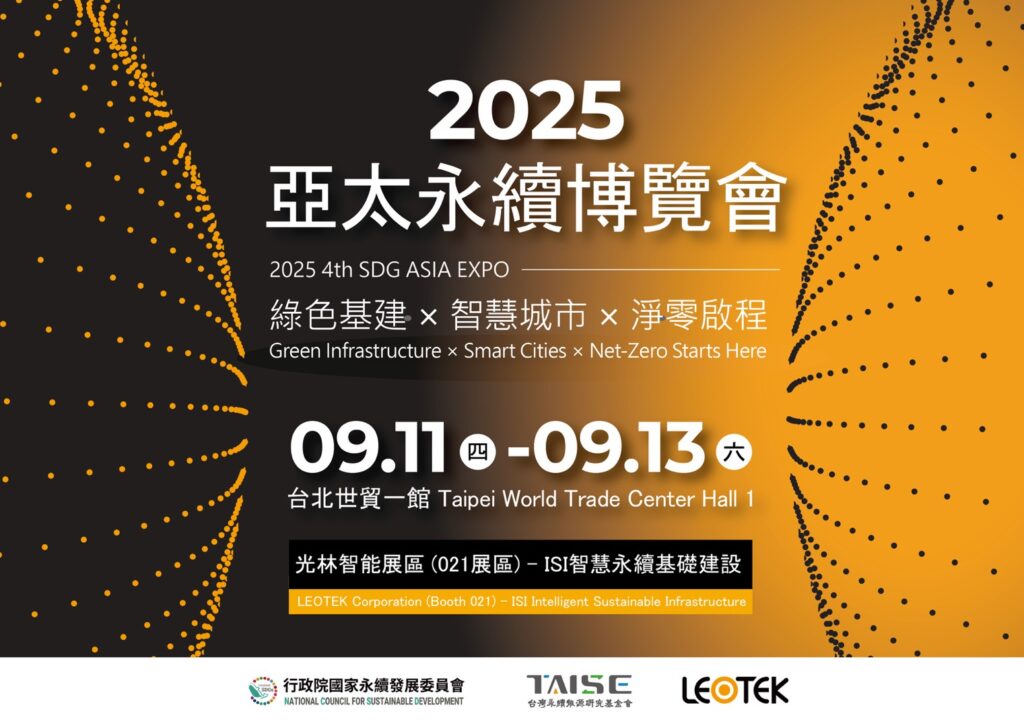1. Introduction
In today’s energy-conscious world, understanding the relationship between power consumption and light output is crucial. For decades, consumers relied on wattage as a primary measure of brightness, but with modern LED technology, lumens and lux have become the key metrics. At LEOTEK, we strive to empower our customers with in-depth knowledge of how LED lighting works—from converting watts to lumens and ultimately to lux—to help you select the ideal lighting solution for your application.
This comprehensive guide will walk you through the definitions, conversion methods, and key factors affecting lighting performance. Whether you’re planning a lighting retrofit, designing a new installation, or optimizing an existing system, this guide provides the essential information you need to achieve superior luminous performance and energy efficiency.
2. Understanding the Basics: Watts, Lumens, Lux and Candela
Before diving into conversions and performance optimization, it is important to understand the fundamental units used to measure lighting.
2.1 What Are Watts?
Watt (W) is a unit of power that indicates the rate of energy consumption. In traditional lighting, wattage was once the sole metric for choosing a bulb. For instance, a 100W incandescent bulb was standard for bright lighting in many households. However, wattage only tells you how much energy is used, not how efficiently that energy is converted into light.
Modern lighting technologies like LEDs and CFLs require less power to produce the same amount of light. Therefore, wattage has become a secondary measure, with a stronger focus on how effectively that power is transformed into visible light.
2.2 What Are Lumens?
Lumens (lm) measure the total amount of visible light emitted by a source. This unit provides a direct indication of brightness regardless of energy consumption. When comparing two light fixtures, the one with higher lumens generally produces more light. In the LED era, lumens have become the key metric for evaluating light output and efficiency.
For example, an LED light with 160 lumens per watt (lm/W) efficiency will produce more light per unit of power compared to one with only 100 lm/W. This makes lumens a far more useful measure than wattage when selecting energy-efficient lighting.
2.3 What Is Lux?
Lux (lx) measures illuminance, which is the amount of light that falls on a given surface area. One lux is equal to one lumen per square meter. Lux levels are used to evaluate whether a space is adequately lit. For example, a room may require an average of 200 lux for comfortable reading, while a warehouse might only need 50 lux.
In practical terms, if you know the total lumens provided by your light source and the area it covers, you can calculate the illuminance (lux) using the formula:
Lux = Total Lumens / Area (in m²)
This measurement is critical in ensuring that lighting installations meet the required standards for various applications, from offices to roadways.
2.4 What Is Candela?
Candela (cd) is the SI unit of luminous intensity, measuring the light emitted in a particular direction. Unlike lumens, which quantify total light output, candela indicates the concentration of light in a specific direction. For example, a light source with a high candela value emits a focused, intense beam, which is critical for applications such as spotlights or vehicle headlights. Understanding candela is essential when evaluating beam spread and the directional characteristics of a lighting fixture.
3. Key Differences Between Lumens and Lux
Although both lumens and lux relate to light output, they serve distinct purposes:
- Lumens quantify the total light emitted by a source.
- Lux measures the intensity of light on a surface.
- Candela indicates the intensity of light in a given direction.
Think of lumens as the “total light produced” by a fixture, while lux is the “concentration” of that light over an area. For instance, the same lumen output can yield different lux values depending on the size of the area illuminated. A small room will have a higher lux value compared to a large hall with the same number of lumens.
Understanding this difference is essential when designing lighting systems to ensure that spaces are properly illuminated.
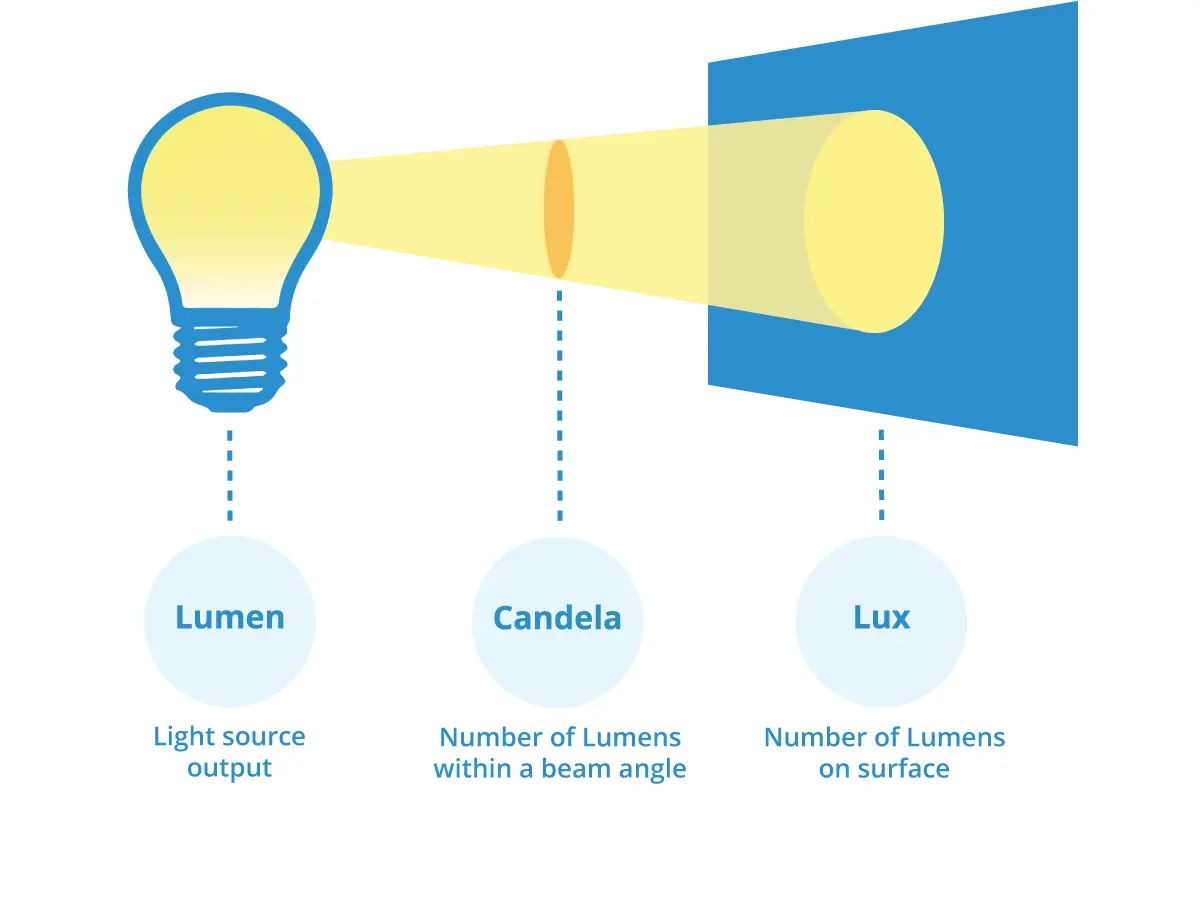
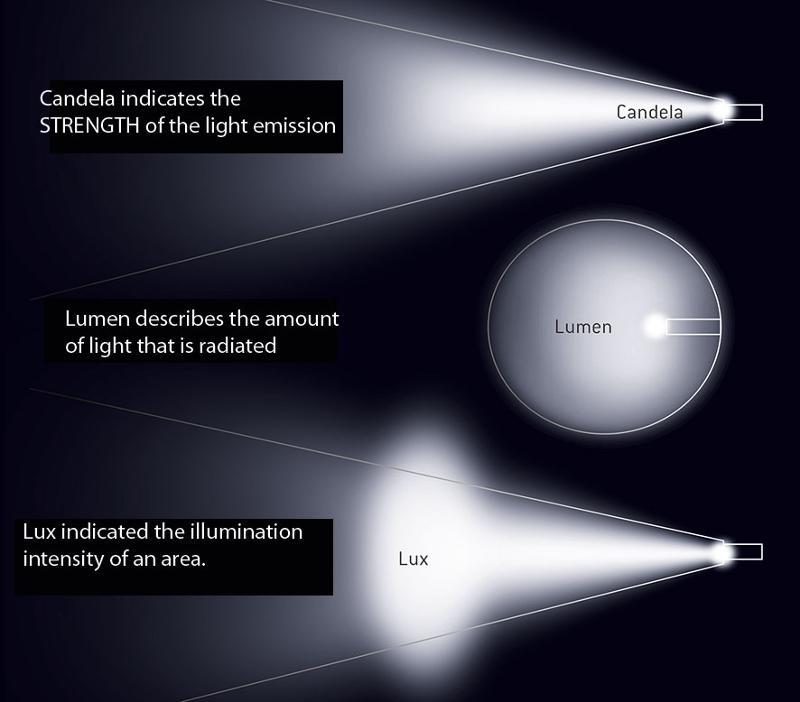
4. Converting Watts to Lumens and Lumens to Lux
Modern LED lighting requires us to look beyond wattage. The concept of luminous efficacy helps bridge the gap between power consumption and light output.
4.1 Understanding Luminous Efficacy
Luminous efficacy is the ratio of luminous flux (lumens) to power consumption (watts) and is expressed in lumens per watt (lm/W). A higher efficacy value means the light source is more efficient at converting energy into visible light. For example, if an LED lamp consumes 12W and produces 1,080 lumens, its efficacy is calculated as:
Luminous Efficacy = 1,080 lm / 12 W = 90 lm/W
This value helps you compare different lighting technologies. LEDs, for instance, can range from 20 lm/W to over 200 lm/W, making them far more efficient than traditional incandescent bulbs.
4.2 Conversion Formulas and Examples
The primary formulas used in conversions are:
- Watt to Lumen Conversion:
Lumens = Watts × Luminous Efficacy (lm/W)
For example, for a 50W LED with 150 lm/W efficacy:
Lumens = 50W × 150 lm/W = 7,500 lm - Lumens to Lux Conversion:
Lux = Total Lumens / Area (in m²)
For a 7,500 lm light source illuminating a 30 m² area:
Lux = 7,500 lm / 30 m² = 250 lx
Keep in mind that additional factors such as maintenance (MF) and lighting distribution efficiency may be applied to these calculations to determine the actual illuminance in practical scenarios.
5. Improving Luminous Efficacy
Increasing the efficiency of a light source is critical for both energy savings and performance. Luminous efficacy can be improved by optimizing several factors.
5.1 Factors Affecting Efficiency
- LED Chip Quality:
Higher quality chips provide greater light output per watt. - Optical Efficiency:
The design of the lens or reflector can direct more light to the target area. - Thermal Management:
Proper heat dissipation prevents the reduction of luminous efficacy over time. - Driver Efficiency:
A high-efficiency LED driver minimizes energy losses between the power source and the LED.
5.2 Optimizing LED Performance
To maximize luminous efficacy, manufacturers work on:
- Using advanced LED chips that yield high lumens per watt.
- Employing robust LED drivers that have minimal energy loss.
- Designing efficient heat sinks (such as using graphene-based materials) to manage thermal output.
- Optimizing optical design for better light distribution.
At LEOTEK, our LED solutions incorporate state-of-the-art technology to achieve superior luminous efficacy, ensuring that our products deliver maximum performance while consuming less energy.
6. Additional Lighting Parameters
Beyond basic conversions, several key parameters influence the quality and performance of LED lighting. Understanding these factors is crucial for selecting the right fixture for any application.
6.1 Correlated Color Temperature (CCT)
CCT, measured in Kelvin (K), describes the color appearance of light. It is determined by comparing the light source to an ideal black-body radiator. For instance:
- Warm White: Around 2700K to 3000K, creates a cozy, inviting atmosphere.
- Cool White: Around 4000K to 5000K, offers a brighter, more energetic feel.
- Daylight: Above 5000K, mimics natural sunlight.
Projects may require specific CCT ranges to achieve the desired ambiance or functionality. For example, outdoor street lighting might favor cooler temperatures for better visibility.
6.2 Color Rendering Index (CRI)
CRI is a measure of a light source’s ability to reveal the colors of objects faithfully compared to natural light. It ranges from 0 to 100, with 100 being ideal. High CRI is important for applications where color accuracy is critical, such as retail spaces and museums. However, higher CRI values sometimes come at the expense of luminous efficacy.

6.3 LED Binning
LED binning is the process of sorting LED chips according to performance characteristics such as luminous flux, color temperature, and CRI. Proper binning ensures uniformity in brightness and color across a lighting installation. For instance, selecting chips from higher bin levels (e.g., bins Q, R, or S) can enhance overall efficiency and product quality.
6.4 Heat Dissipation Considerations
Efficient heat management is essential to maintain the performance and longevity of LED lamps. Components such as the heat sink and chassis materials (e.g., aluminum or graphene composites) are critical in dissipating heat. Poor thermal management can lead to reduced luminous efficacy, color shifts, and premature failure of the LED.
6.5 LED Drivers and Their Efficiency
LED drivers convert AC power to the appropriate DC voltage for LEDs. Their efficiency—the ratio of output power to input power—is critical. A high-efficiency driver consumes less power and generates less heat, contributing to the overall efficacy of the lighting system. For example, comparing two LED drivers for a 100W lamp, one consuming 10W and the other 20W of parasitic power, will yield different overall efficacies.
6.6 Lighting Distribution and Optics
The design of the optical system (lenses, reflectors, diffusers) affects how light is distributed over an area. Materials like PMMA can enhance light transmittance by 2–3% compared to other plastics, while also offering better aging resistance. A well-designed lens directs more light into the target area, thereby increasing the effective lux levels.
6.7 ErP Labeling for Energy Efficiency
Energy-related Products (ErP) labels provide information on the energy efficiency of lighting products. These labels help consumers identify products that meet stringent energy performance criteria. The latest EU standards have simplified labels into an A–G scale, enabling easier comparisons across products. With advanced LED technology, many modern fixtures achieve high energy efficiency ratings (A+ or A++ under older systems).
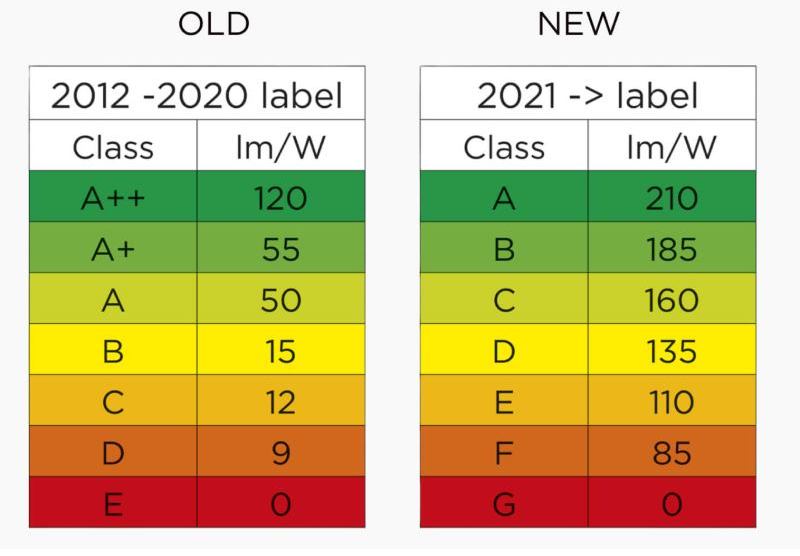
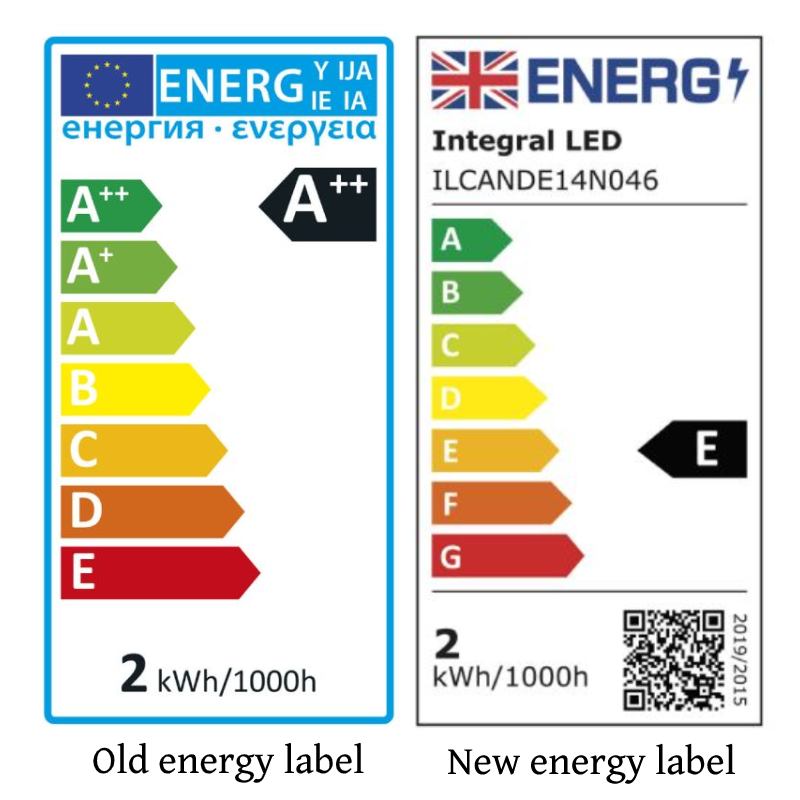
7. LED Watts to Lumens: Practical Examples and Tables
Understanding the conversion from wattage to lumens is fundamental when selecting LED lighting. The conversion largely depends on the luminous efficacy of the LED.
7.1 Table: Typical LED Wattage-to-Lumen Conversion
| Lumens (Brightness) | Equivalent Incandescent Bulb (Watts) | Equivalent LED Bulb (Watts) |
|---|---|---|
| 200 – 300 | 25 | 3 – 5 |
| 400 – 500 | 40 | 6 – 8 |
| 600 – 800 | 60 | 9 – 13 |
| 800 – 1100 | 75 | 10 – 18 |
| 1100 – 1600 | 100 | 19 – 22 |
| 1600 – 2600 | 150 | 20 – 30 |
| 2600 – 3200 | 200 | 31 – 40 |
This conversion chart offers a clear and concise reference for comparing the brightness of LED bulbs to traditional incandescent bulbs. It outlines the lumens range—which indicates brightness—alongside the corresponding wattage of incandescent bulbs and the recommended wattage for energy-efficient LED alternatives. While this guide provides a solid starting point for selecting the right LED bulb, remember that actual performance may vary based on manufacturer and design nuances.
Whether you’re upgrading your home lighting or designing a new space, this table helps you make informed decisions about energy savings and illumination levels.
7.2 LEOTEK LED Street Lights: Luminous Efficacy in Action
At LEOTEK, we are dedicated to pushing the boundaries of LED technology. Our LED street lights are engineered for optimal performance, achieving luminous efficacies that can rival or exceed industry benchmarks. For instance, our latest street lighting solutions are designed to deliver:
- High Luminous Flux: Achieving up to 150–180 lm/W, ensuring bright illumination even at lower wattages.
- Energy Savings: Reduced power consumption translates to lower operational costs.
- Extended Lifespan: Advanced thermal management and robust LED drivers enhance durability and performance.
By comparing our products to traditional lighting (for example, a 50W street light producing around 7,500 lm), LEOTEK street lights not only meet but often exceed the luminous efficacy targets required for modern urban applications.
8. Summary and Key Takeaways
This guide has explored the critical aspects of converting watts to lumens and lumens to lux, emphasizing the following points:
- Wattage measures energy consumption, while lumens indicate light output, and lux quantifies the illuminance on a surface.
- Luminous efficacy (lumens per watt) is essential for evaluating the efficiency of LED lighting.
- Conversion formulas allow for precise calculation of light output and required illuminance for various applications.
- Key factors affecting performance include CCT, CRI, LED binning, heat dissipation, LED drivers, optical design, and energy efficiency labeling.
- Advanced LED technology enables significant energy savings and improved performance, as demonstrated by our high-performance street lights at LEOTEK.
9. Explore LEOTEK’s LED Solutions
At LEOTEK, our innovative LED solutions are designed to offer superior luminous efficacy, energy efficiency, and reliability for diverse applications—from street lighting to commercial and industrial installations. Explore our product range:
- LEOTEK Smart LED Street Lights: Engineered with advanced optics and robust thermal management for urban roadways.
- LEOTEK Energy-Efficient Fixtures: Designed to deliver high lumens with minimal energy consumption.
- Integrated LED Systems: Featuring high-performance LED drivers and precision optics to ensure uniform lighting distribution.
Discover LEOTEK’s LED Products and learn how our cutting-edge technology can transform your lighting project.
10. Related Blogs, Cases, and More
For further insights into LED lighting and energy efficiency, check out our related resources:
- Blog: Maximizing LED Efficiency: Tips and Tricks
- Case Study: LEOTEK LED Street Lighting in Urban Environments
- Technical Paper: Advances in LED Thermal Management
These resources provide additional information and real-world examples of how LED technology is revolutionizing the lighting industry.
References
- Caterpillar Inc. (n.d.). Technology and innovation. Retrieved from https://www.cat.com/en_US/support/technology.html
- ELTEC. (n.d.). Are there sensors at traffic lights? Retrieved from https://elteccorp.com/news/other/are-there-sensors-at-traffic-lights/
- Federal Highway Administration. (2007, November/December). A new look at sensors. Retrieved from https://highways.dot.gov/public-roads/novdec-2007/new-look-sensors
- Foxconn. (n.d.). Innovation and automation. Retrieved from https://www.foxconn.com/
- Group Four Transducers. (n.d.). Pressure transducers and traffic lights. Retrieved from https://groupfourtransducers.com/news/pressure-transducers-and-traffic-lights/
- Honeywell Aerospace. (n.d.). Connected aircraft solutions. Retrieved from https://aerospace.honeywell.com/
- HowStuffWorks. (n.d.). How traffic lights detect your vehicle. Retrieved from https://auto.howstuffworks.com/car-driving-safety/safety-regulatory-devices/how-does-a-traffic-light-detect-that-a-car-has-pulled-up-and-is-waiting-for-the-light-to-change.htm
- Icoms Detections. (n.d.). Traffic light sensor: Regulate the traffic with intelligent sensors. Retrieved from https://icomsdetections.com/traffic-light-sensor/
- Popular Mechanics. (n.d.). How traffic lights work – Everything you need to know about traffic lights. Retrieved from https://popularmechanics.com/cars/car-technology/a45015101/how-traffic-lights-work/
- Rolls-Royce. (n.d.). Predictive maintenance and digital solutions. Retrieved from https://www.rolls-royce.com/what-we-do/services/digital-services.aspx
- Schneider Electric. (n.d.). Digital transformation in energy management. Retrieved from https://www.se.com/ww/en/work/campaign/innovation/
- Siemens AG. (n.d.). Digital factory: Amberg. Retrieved from https://new.siemens.com/global/en/company/stories/industry/amberg-digital-factory.html
- wikiHow. (n.d.). 3 ways to trigger green traffic lights. Retrieved from https://wikihow.com/Trigger-Green-Traffic-Lights
- Wikipedia. (n.d.). Traffic light. Retrieved from https://en.wikipedia.org/wiki/Traffic_light
Author
-
Johnny Wu
Specializing in SEO and digital marketing with a passion for enhancing online visibility. With over a year in the IoT industry, I focus on advancing roadway IoT and AI technologies to improve traffic management and road safety.



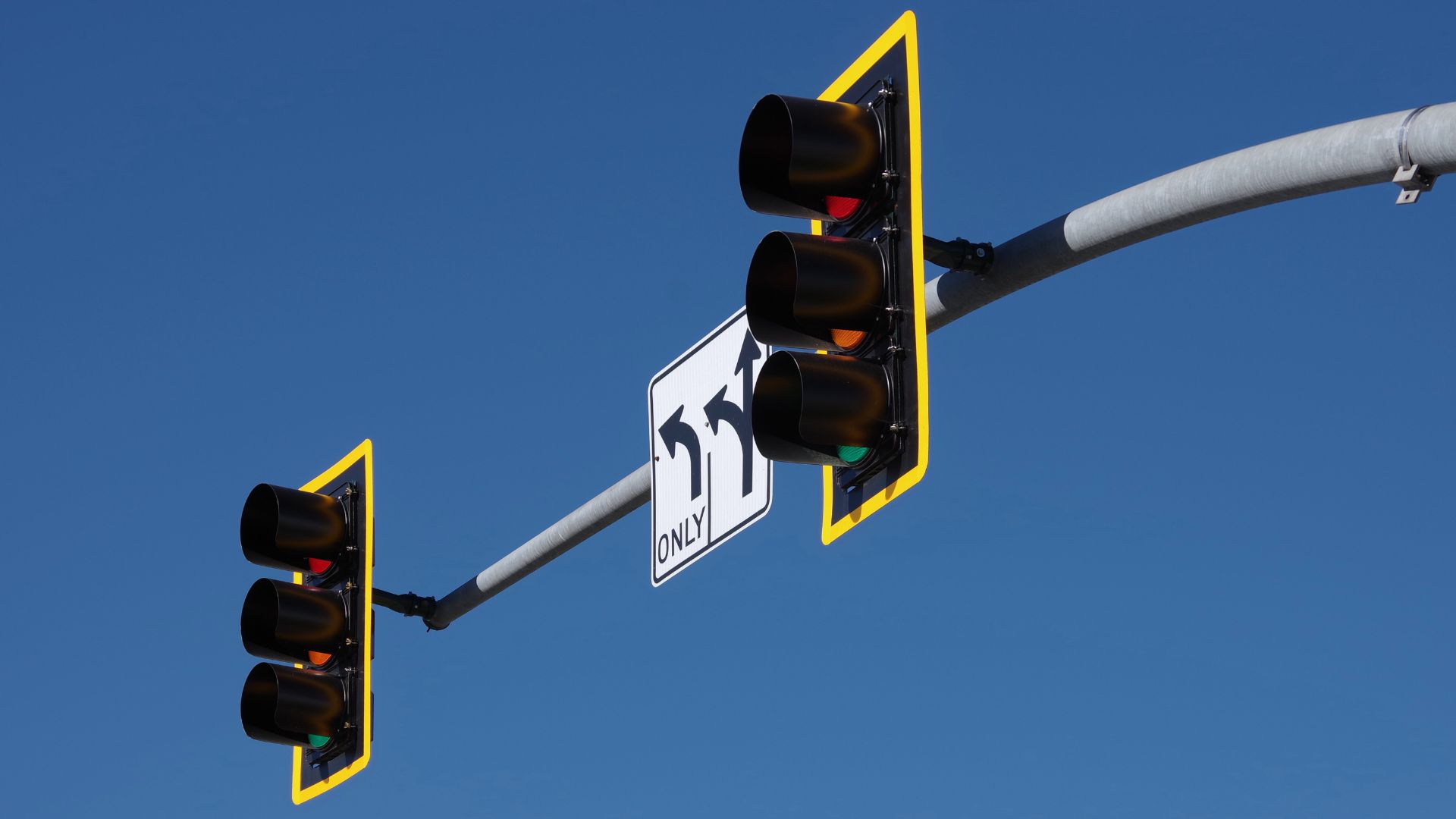
-.jpg)
